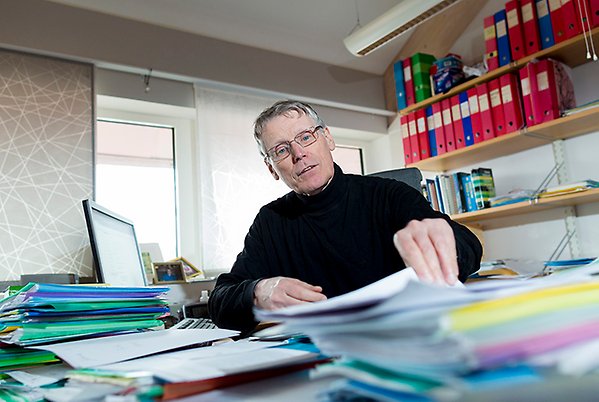Svante Janson tells about his research in combinatorial probability theory

Svante Janson. Photo: Mikael Wallerstedt.
At the age of nine, Svante Janson passed his first high school chemistry course, at a time when students still had to take subject exams to graduate.
“I was interested in chemistry and astronomy as a kid and read my mom’s chemistry books, so I knew a bit even before starting school.”
He quickly became bored with regular classes, but some accommodating teachers ensured that he received tuition in high school subjects from the age of eight. At the age of 14, he received his Degree of Bachelor of Arts. On his 22nd birthday in 1977, he defended his doctoral thesis On BMO and related spaces.
“BMO stands for Bounded Mean Oscillation. In short, the thesis is about the analysis of certain vector spaces of functions,” says Svante.
After vector spaces, he shifted focus to probability theory and eventually to combinatorial probability theory.
“I noticed that I did better in this area.”
Combinatorial probability theory is about different structures, like graphs, which are constructed at random.
“It is important to consider how random structures appear on the whole. In detail, something can be random and chaotic, while the whole is often ordered. Among other things, I try to determine the scale something has to be investigated at so that randomness will not noticeably affect the answer.”
Svante’s field is interesting from both a theoretical and applied perspective. A lot of the questions that he works on are inspired by practical applications, but his interest is in the theoretical aspects.
With the exception of some visits to Stockholm, Chicago, and Cambridge, Svante has remained faithful to Uppsala University.
“It is a good university that has provided me, at least, with an excellent setting for my research.”
Combinatorial probability theory
Combinatorial probability theory combines probability theory and combinatorics. Probabilistic methods are used to study discrete (normally finite) randomly constructed structures, like random graphs, trees, permutations, or letter sequences.
Normally, the asymptotic behaviour is studied when the structure size approaches infinity; this can be considered an approximate description of large but finite random structures. The field is closely linked with applications both in mathematics (primarily combinatorics) and in computer science, bioinformatics, and epidemiology,
